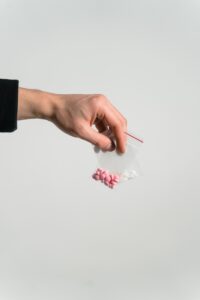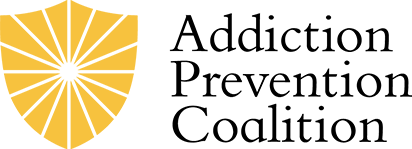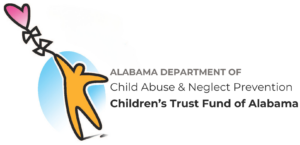The epidemic of drug overdose is only growing larger. New substances are emerging each year that present new challenges and possibilities for abuse. The deadly quest to numb and escape has resulted in new synthetic drugs emerging, creating another obstacle between us and overdose prevention in the United States.
One such emerging synthetic opioid is Benzimidazole-Opioids, also called Nitazenes, which are synthetic opioids. In search of an alternative to morphine, pharmacists created Nitazenes over 60 years ago. However, it was never approved by the Food and Drug Administration due to its addictive characteristics. There are many different types of Nitazenes, some of which are Isotonitazene, Metonitazene and Etonitazene, all of which are schedule 1 drugs and can only be sold illegally. Other schedule 1 drugs include Heroin, Ecstasy, and LSD, all of which have been determined to have no medical use and a high potential for abuse. Nitazenes are 800 times more powerful than Morphine and 40 times more potent than Fentanyl which has been responsible for 77% of the overdose deaths in the United States in 2020. Although Fentanyl is the leading cause of overdose, the emergence of Nitazenes is creating additional concern for a future epidemic of overdoses as individuals continue to seek relief in new ways. These substances are less likely to be heavily regulated by law officials because there isn’t a centralized system for identifying these new emerging substances, making overdose and abuse difficult to identify.

There is an important distinction between Opioids and Opiates that is crucial to the conversation of the opioid epidemic. Opioids are a broad class of medication and can be developed naturally and synthetically. In contrast, Opiates are solely drugs that are produced from natural substances, specifically the poppy plant. Synthetic drugs are any drugs that are created by man-made chemicals rather than natural resources. Nitazines and Fentanyl are cheap man-made alternatives to other schedule 1 drugs. Being developed in a lab, these synthetic options are cheaper and much stronger, which is a large incentive for drug dealers and addicts to continue to produce and consume. Brent, a recovering heroin addict and member of APC’s advisory team shares,
“When I was doing heroin, my friend Crocker died of an overdose from a dealer we knew well. In any other drug circles, if someone died doing meth or coke, or if someone went to a bar and died, you wouldn’t go to that bar. But with opioids, that doesn’t mean it is bad, rather that it is good, powerful, and potent. And that is who you go to. From the drug dealer perspective, whoever has people dying is the one making the sales.”
This reality creates a discouraging cycle, as death is the fuel to the fire of the synthetic drug epidemic. However, there remains another category of individuals who are dependent on other drugs, such as meth and cocaine that are not in search of the strongest drug. Drug dealers can produce more efficiently if they can lace their products with Fentanyl and Nitazines. As a result, there is a class of drug addicts who are overdosing on medications that were unknowingly laced with deadly doses of opioids. Brent shares his perspective on this issue stating that their efforts to prevent drug overdose has shown little to no progress, despite the large strides they have made. According to the Jefferson County reports, in 2014, there were 14 opioid related deaths, bringing the county and city to declare an epidemic in the area. In 2021 alone, there were 343 opioid deaths in Jefferson County. This epidemic has shown no signs of stopping and there is a major call for intervention and change.
Brent states, “I applaud the police and community members for what they have done, but as much as we’ve done with fentanyl test strips and everything else, the problem continues to get worse. At some point we must be willing to ask, ‘What radical things can we do?’ And one thing we can do this year is get needle exchanges. That would be huge.”
Brent follows this statement by sharing that he is a registered Republican and does not see needle exchanges as a radical left-wing agenda, but rather an unconventional solution that has been proven to work in other states that have chosen to enact these policies. As someone who has been on both sides of the issue, in being a part of the black market of the drug overdose world and having been in the prevention and recovery side of the drug epidemic, Brent has a unique and credible perspective on what will bring about change in the overdose numbers.
To learn more about the importance of Harm Reduction, click here (https://apcbham.org/2021/07/06/harm-reduction-reducing-the-potential-for-harm-in-addicted-individuals/), and Fentanyl Strips, click here. (https://apcbham.org/2022/06/21/how-fentanyl-test-strips-can-prevent-accidental-overdose/)
Brent reflects on the epidemic of opioids saying, “The Nitazenes, the Fentanyl, and the more powerful opioids have really brought a whole new level of mortality that I have never seen before. I never expected to know one person a week to die of a drug overdose.” There are new developments of drugs each year as more and more stories emerge of individuals who fell victim to overdose on dangerous potent synthetic drugs. Nitazenes have newly emerged as a large culprit of overdoses in the United States. As we proactively fight against the emerging issue of drugs, it is crucial to be aware of the issues and be educated on the arising needs.
https://www.drugfreeworld.org/drugfacts/synthetic.html
https://health.usnews.com/drugs/articles/nitazenes









